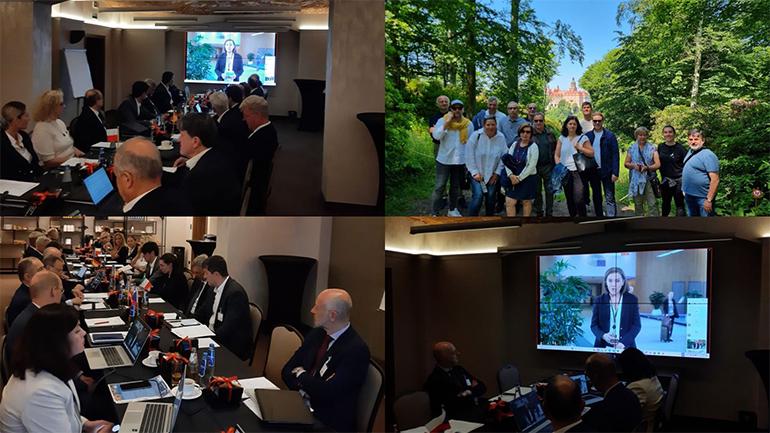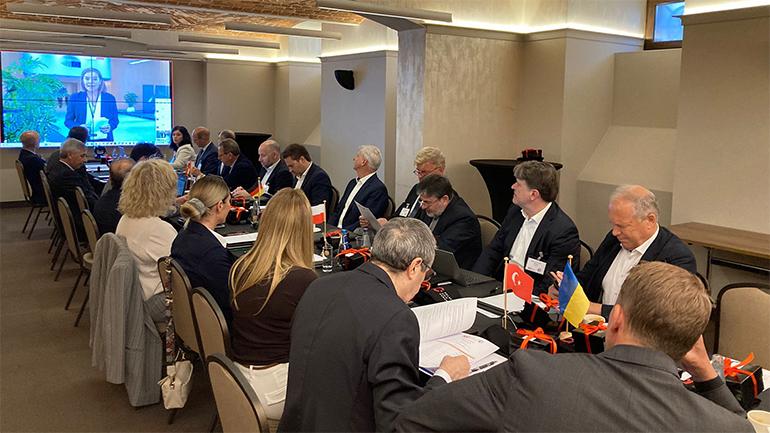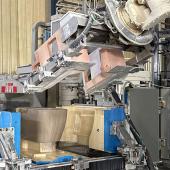European ceramic tile industry meets for annual congress
Protecting competitiveness was at the heart of the discussions at the Annual Congress of CET (European Federation of Ceramic Tile Manufacturers), held in Poland from 12 to 14 June.

The annual congress of CET – European Federation of Ceramic Tile Manufacturers held in Wrocław, Poland from 12 to 14 June brought together leaders from national trade associations and industry representatives to discuss the key challenges facing the sector. The topics of discussion ranged from the energy transition and EU trade policy to market access and environmental regulations, all with a shared focus on defending the competitiveness of Europe’s ceramic industry. The congress appealed to the EU for urgent structural measures to safeguard the industry’s competitiveness, which continues to suffer under the burden of the energy crisis, regulatory costs and unfair trading practices.
CET’s General Assembly was held on 13 June at the AC Hotel Marriott in Wrocław. Following the welcome remarks by Ferdynand Gacki, President of Polska Unia Ceramiczna (the Polish ceramic association hosting the event), the session was opened by CET Vice-Presidents Roman Blažíček and Raul Carnicer.
MEP Elisabetta Gualmini, Chair of the European Policy Ceramics Forum, addressed the audience via video message, highlighting the strategic importance of the ceramic industry for employment and value chains within the EU. She also stressed the need for EU policies that reinforce manufacturing across the continent. “We need to shift from a Europe of consumers to a Europe of producers,” she said.
Vice-President Raul Carnicer echoed this sentiment, calling for “a significant shift in EU policies to reverse the current trend of replacing European industrial manufacturing with imports from countries with significantly lower environmental and social costs”.
Sales stable but still well below pre-crisis levels
The economic data presented at the assembly painted a complex picture for the sector. Despite a strong export orientation and high product quality, European tile manufacturers remain under pressure. Although ceramic tile sales by volume were stable in 2024 compared to 2023, they remained 24% below 2021 levels, even as EU tile consumption rose by 7.5% (a sign of growing reliance on imports). The picture was even more concerning for non-EU exports, which fell by 3.6% compared to 2023 and by 34% compared to 2021. This decline is attributable to the combined effects of energy costs, higher regulatory costs and tariff and technical barriers to trade in export markets.
CET’s demands: emergency measures and ETS reform
To address these challenges, CET reaffirmed the urgent need for short-term emergency measures on carbon costs to restore the competitiveness of European production. Key proposals included:
- Temporary suspension of the EUA surrender obligation or a reduction in the rate of free allocation for sectors impacted by the crisis;
- Simplification of the ETS for small emitters by raising the eligibility threshold for national equivalent measures (Article 27 of the EU ETS Directive) from 25,000 to 50,000 tCO₂ per year;
- Review of the ETS State Aid Guidelines to extend eligibility for indirect cost compensation to the ceramic industry and other energy-intensive sectors, thereby supporting their decarbonisation efforts without undermining their investment capacity or global competitiveness.
Trade: stronger defence against dumping and subsidies
The CET General Assembly also called on the EU to further strengthen trade policy instruments – or develop new ones – to more effectively tackle the effects of dumping, illegal subsidies and overcapacities, not only from China but also from India. CET members reiterated their call to fully reflect non-incurred environmental costs when calculating the dumping margin.
Focus on sustainability, safety and transparency
The General Assembly also discussed environmental and regulatory issues, including the ongoing review of the BREF (Best Available Techniques Reference Document for the ceramics sector) and ETS-related concerns. Confindustria Ceramica presented an impact study highlighting what it described as the “disproportionate and unjustified” costs of the environmental policies planned for the coming years.
In addition, a study promoted by ASCER and Confindustria Ceramica was presented, emphasising the benefits of ceramic tiles in terms of durability, fire safety and energy efficiency of buildings. Finally, CET members reiterated the need to introduce mandatory origin labelling on products to ensure greater transparency for European consumers.
Unity and a shared vision: next stop Italy 2026
In his closing remarks, CET Vice-President Roman Blažíček thanked Polska Unia Ceramiczna for hosting the 2025 Congress and welcomed the discussions among representatives of an industry that Europewide counts thousands of SMEs, more than 200,000 direct employees and numerous “global champions”. “Only by standing fully united can we call at an EU and national level for simplification, emergency measures on carbon and energy costs and a strong trade policy,” he said.
The next CET Congress will take place in Italy from 4 to 6 June 2026.
Did you find this article useful?
Join the CWW community to receive the most important news from the global ceramic industry every two weeks























